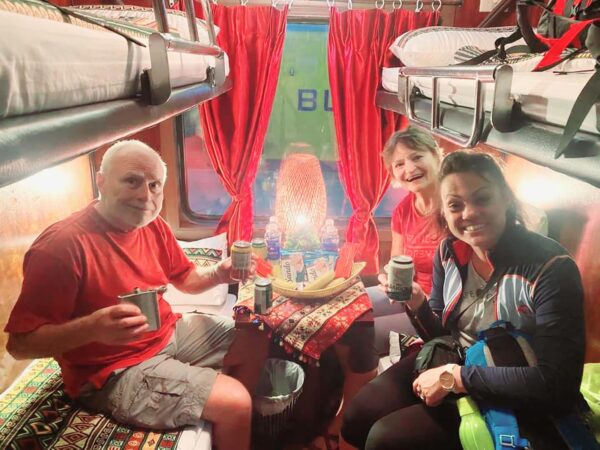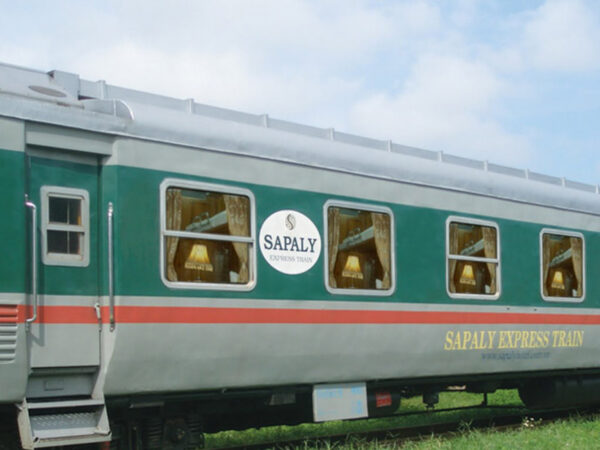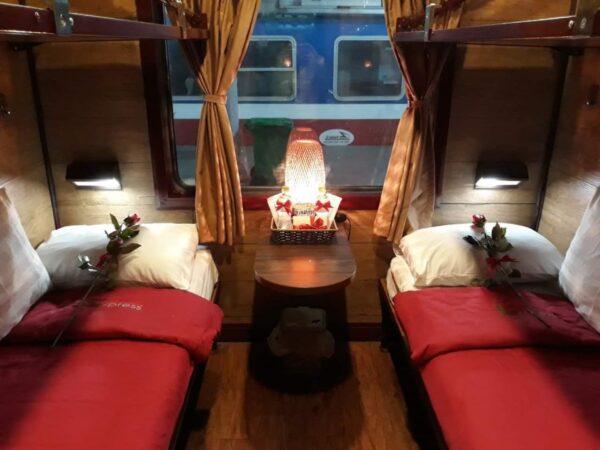Rattan Bridge: Delight in Charming Sapa Wilderness Escape
Have you ever tried walking on a bridge made of rattan and bamboo? In Sa Pa, many small bridges help local people cross rivers and go from one village to another. But the Rattan Bridge in Tả Van & Giang Ta Chai is special. Many tourists come here to take photos. But is it safe? Is it fun? Let’s find out more about this cool place in Sapa Nomad’s article below!
Where is the Rattan Bridge?
1.1. The New Rattan Bridge – Ta Van Village
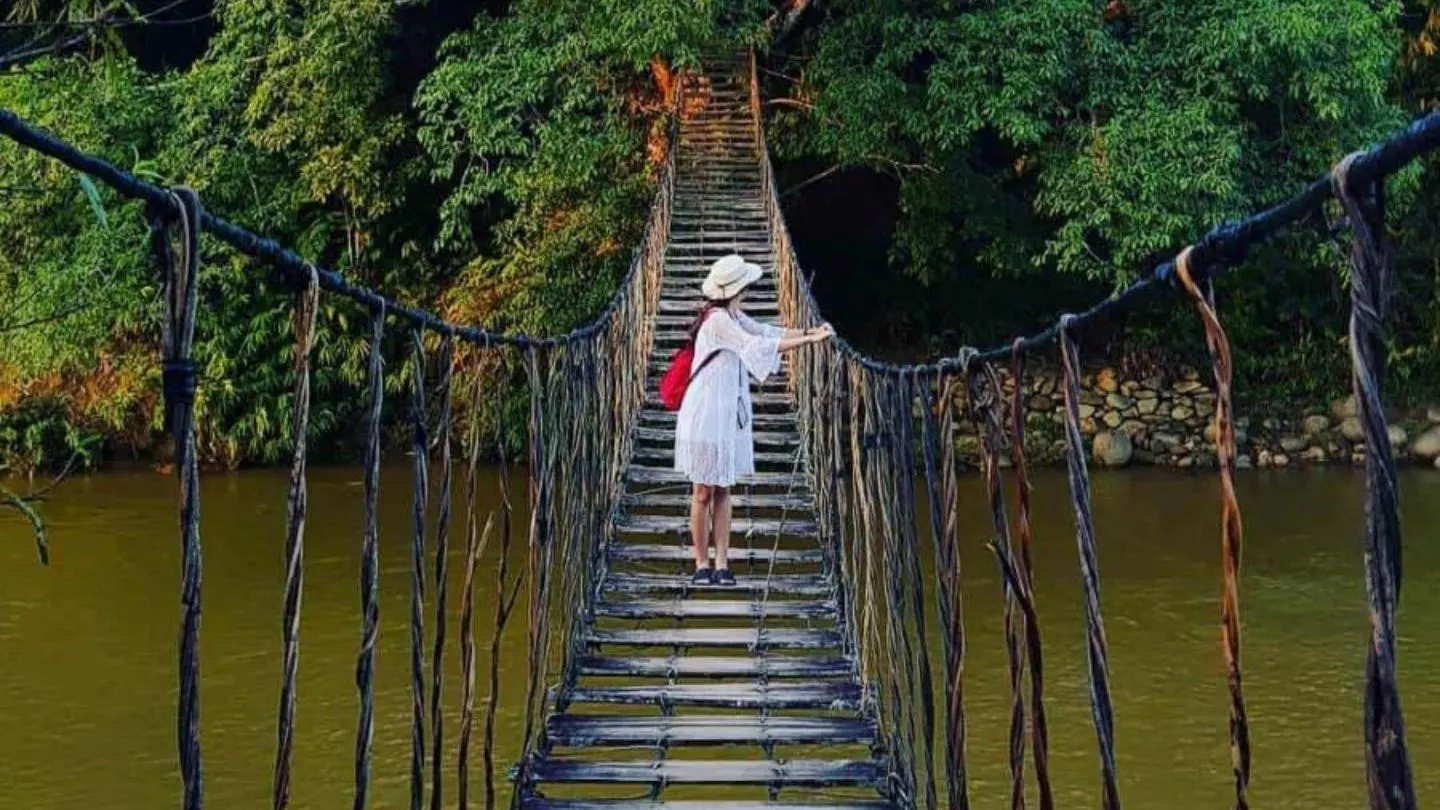
Tucked away in the peaceful village of Tả Van, about 10km southeast of Sa Pa town, the new Rattan Bridge has quickly become a must-visit check-in spot for travelers seeking something a little off the beaten path.
Getting there is already part of the adventure: the road winds gently along the mountainside, and from the entrance of the village, you’ll follow a quiet trail for about 3 more kilometers to reach the bridge. As you walk, the sounds of nature grow louder — the rustling leaves, the calls of birds, and finally, the soft, inviting gurgle of the stream below the bridge.
What makes this bridge special isn’t just the view, but the way it’s built — completely from wild rattan ropes, handwoven by locals. As you step onto it, the gentle swaying of the bridge, paired with the sound of flowing water, gives you that dreamy, floating feeling — like walking above nature itself. It’s raw, rustic, and quietly poetic, just like the soul of Sa Pa.
1.2. The Ancient Rattan Bridge – Giàng Tà Chải
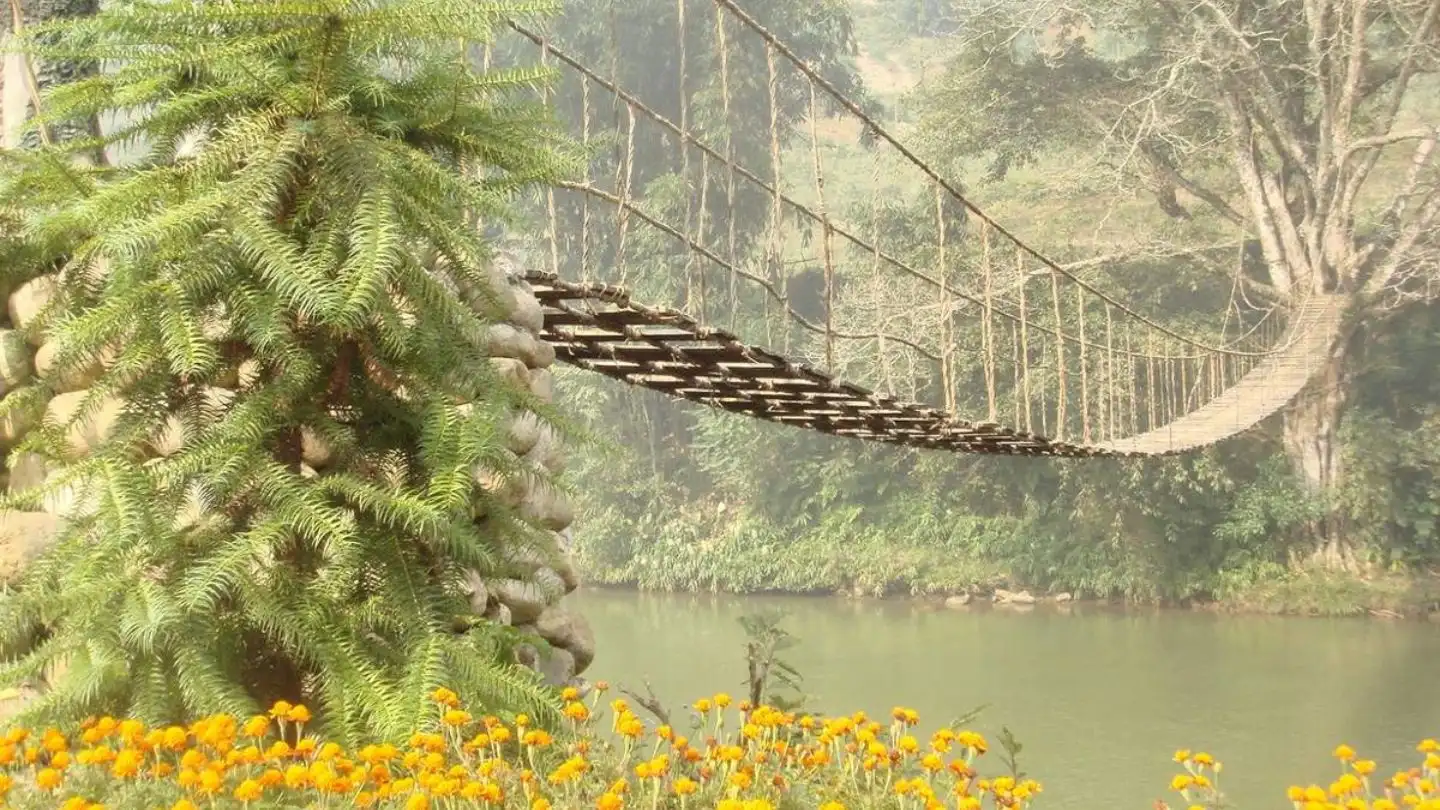
Hidden deeper in the hills, in the small village of Giàng Tà Chải, lies a true gem — the Ancient Rattan Bridge, a place that seems untouched by time. To get there, you’ll travel another 4km from the new bridge, arriving at Hòa Sử Pán 1 Hamlet in Mường Hoa Commune, about 17km from central Sa Pa.
This isn’t just a bridge — it’s a living piece of history. Known as one of the oldest remaining rattan bridges in the area, it stands as a quiet witness to generations of mountain life. Built with thick forest rattan and stretching across the peaceful Muong Hoa Stream, the bridge is surrounded by lush greenery, misty hills, and the constant, soothing rhythm of running water
The Charming Simplicity of Rattan Bridge
The answer lies in its simple and peaceful charm. The bridge is handmade from rattan and bamboo, with ropes and wooden planks woven together. It gently stretches across the calm Muong Hoa Stream, surrounded by green mountains, whispering waters, and a deep blue sky. Everything around you feels like a painting – quiet, natural, and incredibly relaxing.
Walking on the bridge, you feel like you’re stepping into a different world – one that’s untouched and full of natural beauty. Keep going a bit further, and you’ll find the beautiful Giang Ta Chai Waterfall, hidden deep in the forest, where water flows down in soft waves through the trees.
The beauty of the Rattan Bridge reflects the heart of Northwest Vietnam’s mountains – wild yet gentle, young yet timeless. And here’s a little bonus: if you’re lucky, you might spot Dao women in traditional clothes, holding bright umbrellas. Don’t be shy — ask for a photo! It’ll be a moment you won’t forget.
What To Do at Rattan Bridge Sapa?
Visiting the Rattan Bridge in Tả Van Village is more than just walking across an old bridge — it’s a full-on experience! Here are 5 must-try activities that will make your trip unforgettable:
1. Test Your Nerves on the Wobbly Wooden Planks
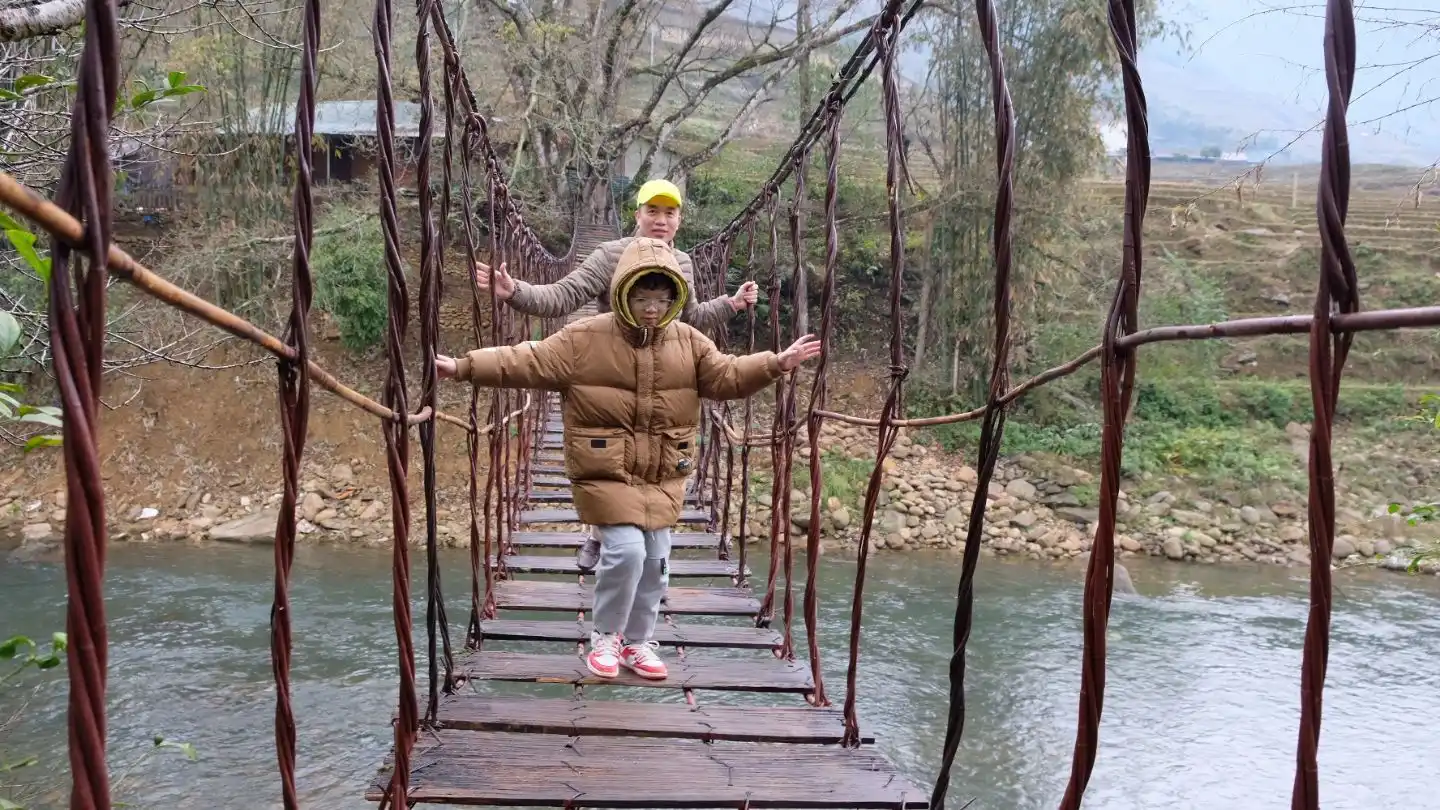
One of the first things you’ll notice? The bridge moves gently as you walk. Sounds scary? Maybe a little – but that’s part of the fun! The wooden planks are spaced about 20–25 cm apart, and when you look down, you can see the clear waters of Muong Hoa Stream flowing below.
If you’re someone who enjoys a little challenge and doesn’t mind heights, this is your moment. Just take it slow, step carefully, and enjoy the thrill. Pro tip: only 4–5 people should cross at the same time to keep things safe and steady. And if you reach plank number 18… you’ll see a surprise – a section that’s a bit broken.
2. Soak in the Peaceful View of Muong Hoa Stream
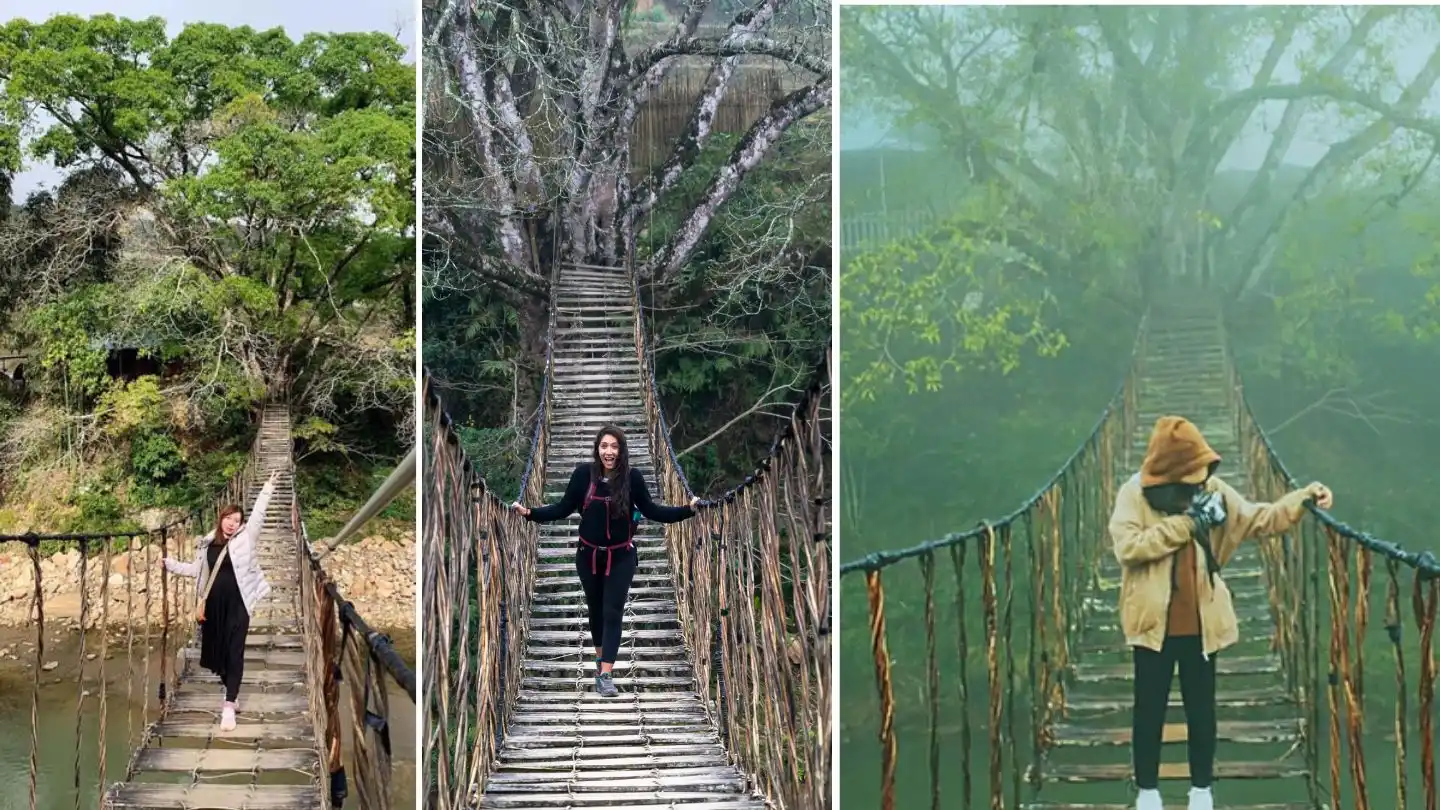
You can simply stand still on the bridge — maybe around the 3rd or 4th plank — and just look out. Muong Hoa Stream flows gently beneath you, weaving through rocks and trees. It’s not a loud or wild river; it’s soft, calm, and poetic, like something from a postcard.
And when the wind blows, you’ll hear nothing but water and birds — a perfect moment of peace in the heart of the mountains.
3. Dress Up in Traditional Ethnic Costumes
Want that perfect “wow” photo? Try renting a traditional costume! Right near the check-in area, local people offer outfits from ethnic groups like the Red Dao or H’Mông.
You can wear a dark indigo shirt with red headscarf, or go bold with a bright pleated skirt and colorful belt — it’s up to your style. Prices range from 50,000–100,000 VND per set, and the staff there can even help you get dressed.
4. Capture Amazing Photos with Epic Backdrops
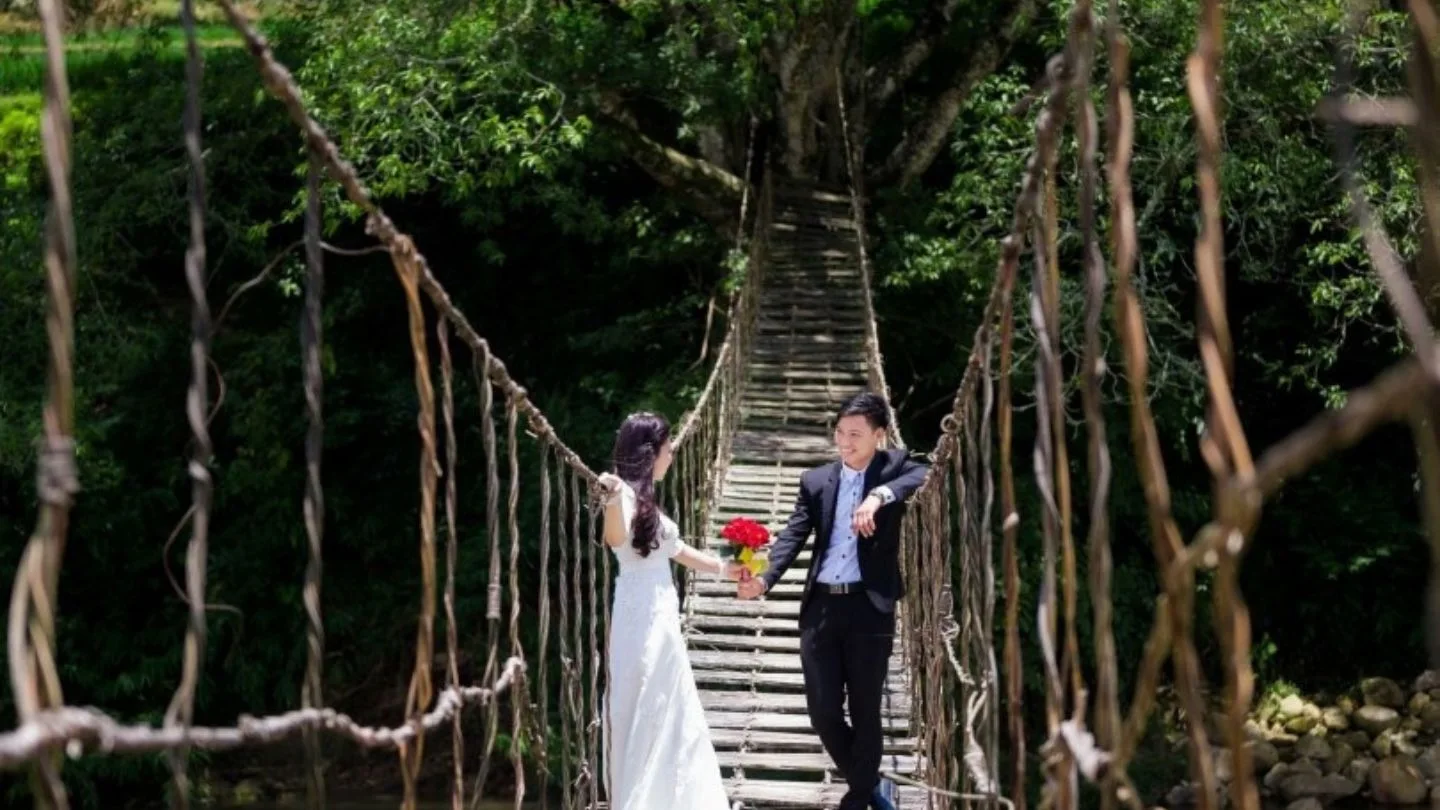
Let’s be honest — if you didn’t take a photo, did it even happen? One of the best photo spots is right about 1/3 of the way across the bridge. Look for a large old tree in the background and make sure to face toward the mountains.
With the green hills, terraced rice fields, and twisting stream behind you, every shot looks like a travel magazine cover. And if you’re in traditional dress? Even better!
5. Enjoy a Local Lunch with a View
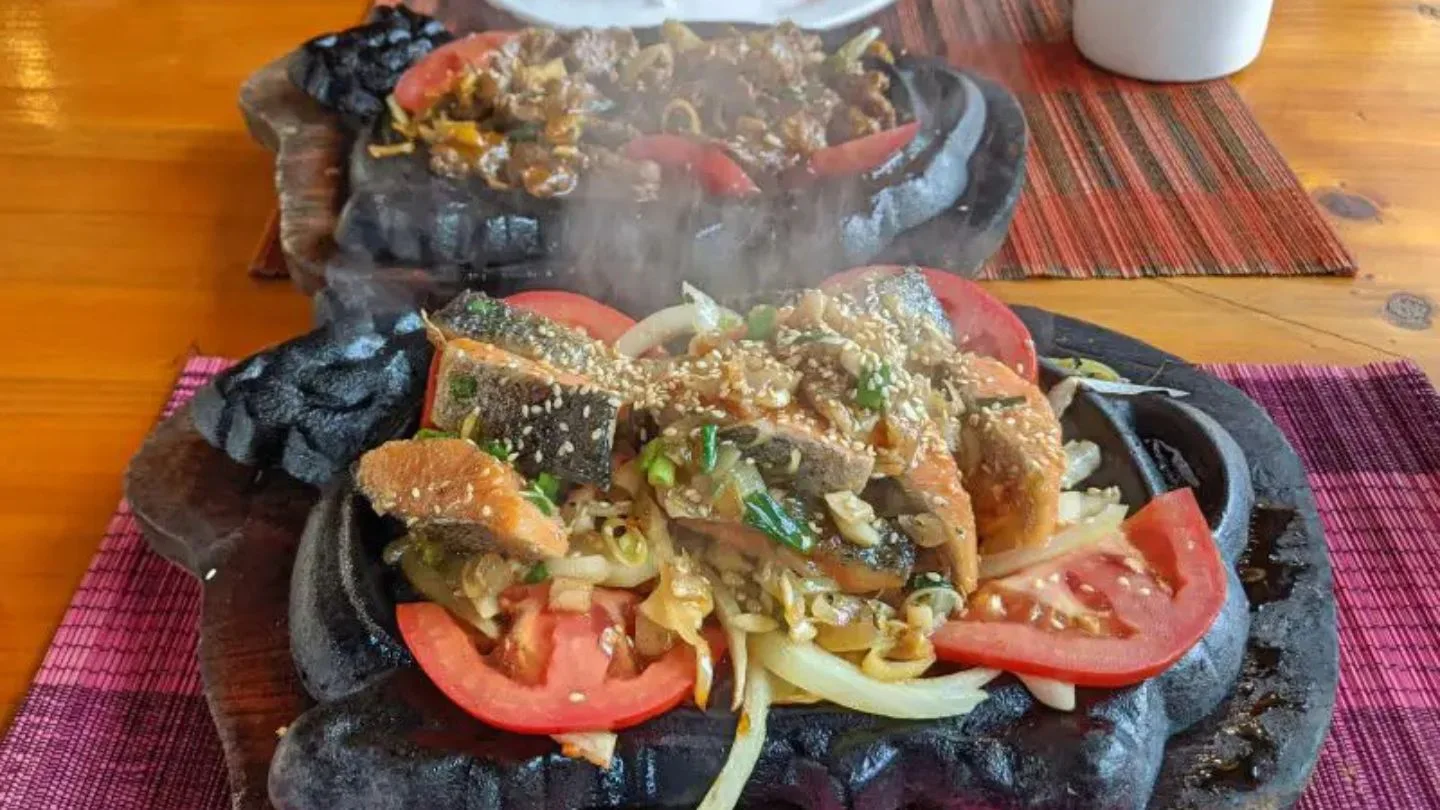
Feeling hungry after all that exploring? You can enjoy a simple, homemade meal right at the check-in area. Locals offer tasty dishes like grilled mountain pork, where the fat and lean layers melt in your mouth, or young chayote greens stir-fried with garlic — a classic in the north.
How To Get To Rattan Bridge?
Step 1: From Hanoi to Sapa
One of the most popular options is taking a sleeper bus or limousine bus. These buses run daily, both during the day and at night, and the trip takes about 5 to 6 hours.
Another choice is the train from Hanoi to Lao Cai station, which takes around 7 to 8 hours. From Lao Cai, you’ll need to take a bus or taxi for another 1 hour to reach Sapa town.
If you’re looking for the fastest and most comfortable option, you can book a private car or taxi, but this will be more expensive. It’s great for families or small groups who want privacy and direct pickup from the hotel.
Step 2: From Sapa To Rattan Bridge
Get To The New Rattan Bridge – Ta Van Village
Starting from the center of Sapa town, head toward Cau May Street (also known as “Western Street”), then turn onto Muong Hoa Street. Keep going until you reach a junction, where you’ll turn onto Provincial Road 152.
Drive for about 2 more kilometers, then turn right into Lao Chai Village. From there, follow the Muong Hoa Stream along a small dirt path for about 3 km. Don’t worry — the trail is narrow but easy to walk, and peaceful rice fields, quiet villages, and beautiful mountain views’ll surround you.
After a lovely walk, you’ll arrive at the Ta Van Rattan Bridge, gently swaying over the stream, waiting for you to explore.
Get To The New Rattan Bridge – The Ancient Rattan Bridge – Giang Ta Chai
- Hop on a motorbike (or hire one with a local driver if you’re not confident riding), and head out from the center of Sa Pa. You’re aiming for Muong Hoa Valley, which is about 8 km away. Just follow the signs — the road is a bit winding but the views are totally worth it.
- Once you hit a crossroads, take a turn onto Provincial Road 152. It’s a small road but easy to recognize. From there, ride for another 2 km or so.
- After that short stretch, make a right turn into Lao Chai Village. Now, things get interesting! You’ll leave the paved road and start following a dirt trail — it’s not too hard, just a bit bumpy. From here, it’s around 3 more kilometers to go.
Conclusion
The Rattan Bridge is a fun and special place in Sa Pa. It is made from bamboo and rattan, and it moves a little when you walk. Many people come to see it, take photos, and enjoy the view. If you like nature and want to try something new, this bridge is a good place to visit. Now you know more about it – maybe it’s time to see it with your own eyes!











